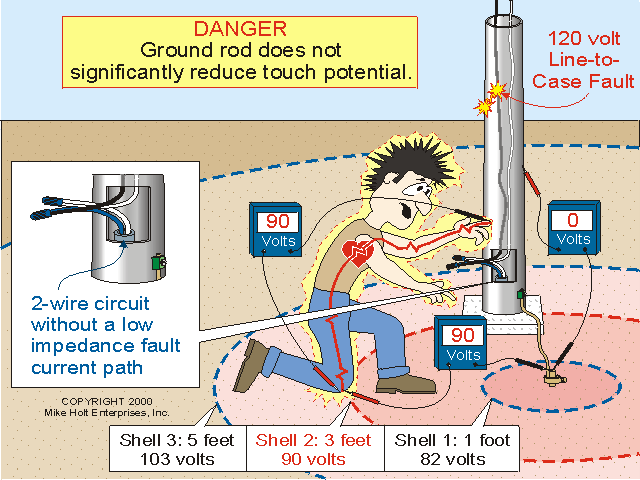If EGC will not be properly sized may cause it to become a fuse and therefore be removed out untintentionaly.
It is dangeours and very hazardous to say that the earth connection is less important. Arcing Ground Faults are single line to ground faults in SOLIDLY GROUNDED SYSTEM that are smaller in magnitude the the bolted single-lline-to-ground fault. This ARCING GROUND FAULT is most of the time even less than the ampere trip rating of the OCPD. Even with the best BONDED EGC the OCPD will not operate because the ground fault is still too low. However due to this ARCING GROUND FAULT, the accidentally metal piece of equipment will now be energized and if the energized metal piece of equipment is not conneted to the EARTH will cause electric hazard.
In premises wiring of 480 volts, line-to-neutral voltage is more than 150 volts to ground. The code requires a ground fault protection for OCPD rated 1000amps or more for the protection against ARCING GROUND FAULT. Maximum setting of GROUND FAULT PROTECTION only up to 1200 amps. If the main cirucuit breaker in a premises wiring 3000Amps this means that ground fault due to ARCING will have current of less than 3000amps. If the main circuit breaker has not ground fault protection, it means that it will not trip on an ARCING GROUND FAULT. If the arcing ground fault energizes the metal part and it is not connected to earth then there is a danger of electric shock. It is important to note that ARCING GROUND FAULT is low enough NOT TO OPERATE the OCPD despite the bonded EGC.
Most of the people who are working near energized equipment or appliances are people who don't know better. Only small percentage of the population are Electrical Engineers and Electricians. These people who don't know better would have to be protected against the hazards in the use of electricity.


